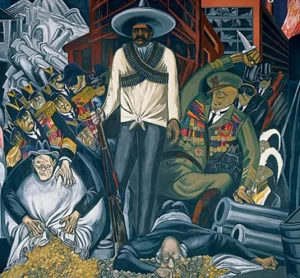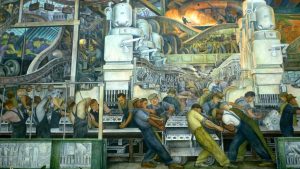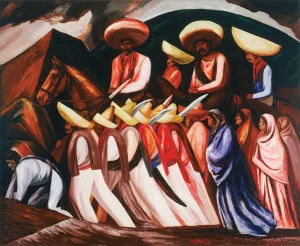Vaishnavi Srivastava
1st May 2023. ON THIS DAY.
“Art respects the masses, by confronting them as that which they could be, rather than conforming to them in their degraded state.”
–Theodore Adorno
May 1st is celebrated globally as International Day of Workers or Labour Day. On this day we explore the discourse on art and working-class unit in order to delve deep into the artists who choose to depict the masses in their artwork as a mode of expression.
The connection between art and working-class people has been nuanced and changing throughout history. The higher classes have traditionally been considered as having the resources and free time to enjoy art, whilst the working class was seen to be more preoccupied with more practical issues. The sufferings and tribulations of the working class have, nevertheless, been portrayed through the art of numerous artists throughout history. The Industrial Revolution and the development of socialism in the early 20th century are a merely couple of examples of periods when this has been especially true.

Many artists participated in the labour movement in the early 20th century and produced pieces that were meant to inform and motivate workers. Among the most well-known of these artists were the Mexican muralists, such as Diego Rivera, David Alfaro Siqueiros, and Jose Clemente Orozco. They portrayed the challenges and aspirations of workers in their art in order to foster a feeling of social justice.
To inform the people about Mexican history and culture, the Mexican government hired muralists to paint murals in public spaces like schools and government offices. They frequently portrayed the challenges and lives of working-class people in their works. For instance, Rivera’s Detroit Industry Murals in Detroit, Michigan, show automobile industry workers going about their daily lives. The paintings encourage a feeling of social equality while honouring employees’ contributions to society.

Courtesy: Smarthistory
The federal government in the United States started a number of programmes during the Great Depression to hire artists and writers to produce works that would capture the experiences of the working class. As a result, numerous murals and other public artworks honouring the sacrifices of workers and the dignity of labour were produced.

Courtesy: The New Yorker
Many artists today still investigate issues pertaining to the working class and use their creations to draw attention to the struggles and aspirations of working people. There are many diverse art genres that aim to engage with and depict the realities of the working class, from street art to documentary photography.
The work of artist and activist Ai Weiwei, who has utilised his art to raise awareness of social justice and human rights issues, is one example of this. His writing frequently draws attention to the struggles of underrepresented groups, notably members of the working class. As an illustration, his 2018 installation “Law of the Journey” depicted a boat full of refugee figures to symbolise the trials and sufferings experienced by those fleeing conflict and persecution.

Courtesy: ARTPIL
Another illustration is the street art of artist Banksy, whose pieces frequently touch on concerns of social and political inequity. One of his most well-known pieces, “Balloon Girl,” depicts a young girl releasing a balloon in the shape of a heart into the air to represent hope and the possibility of change.
People can connect via art, and it can also spread a feeling of equality and social justice. Artists have the power to draw attention to the difficulties and ambitions of the working class while also fostering a stronger feeling of social consciousness and unity. Artists can contribute to the development of a more just and equitable society for all by interacting with and portraying the experiences of the working class.






